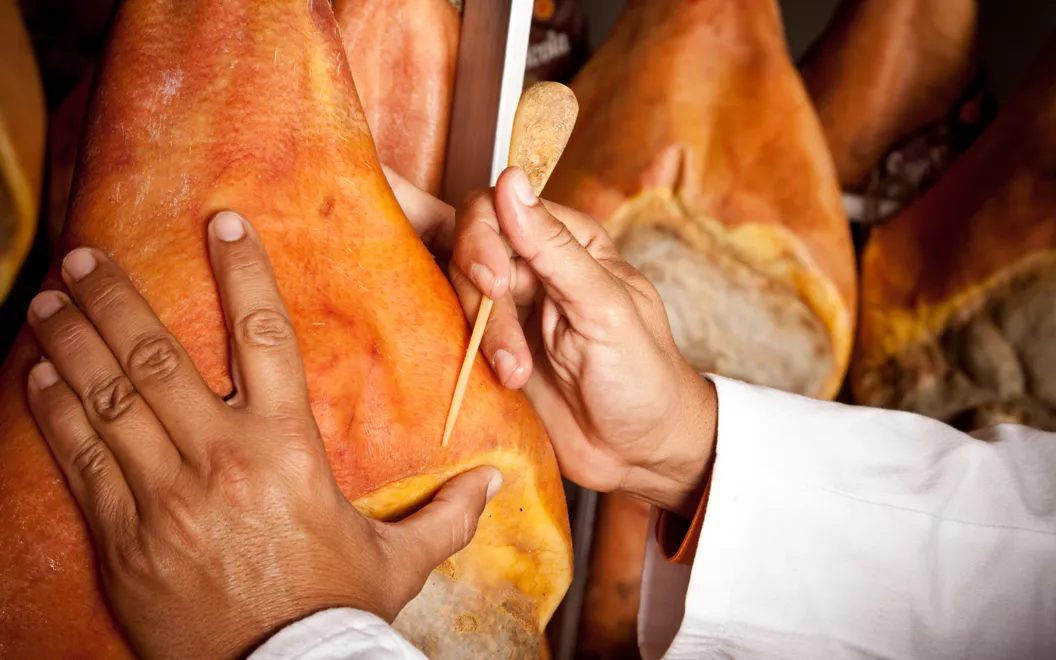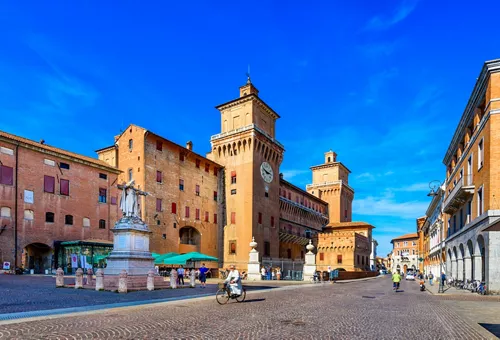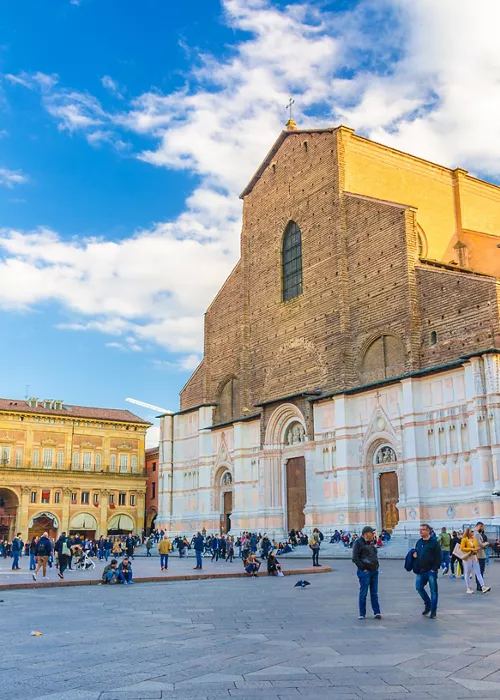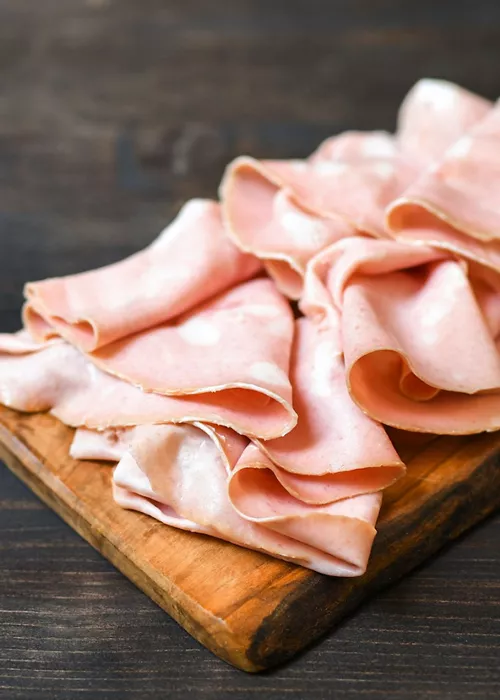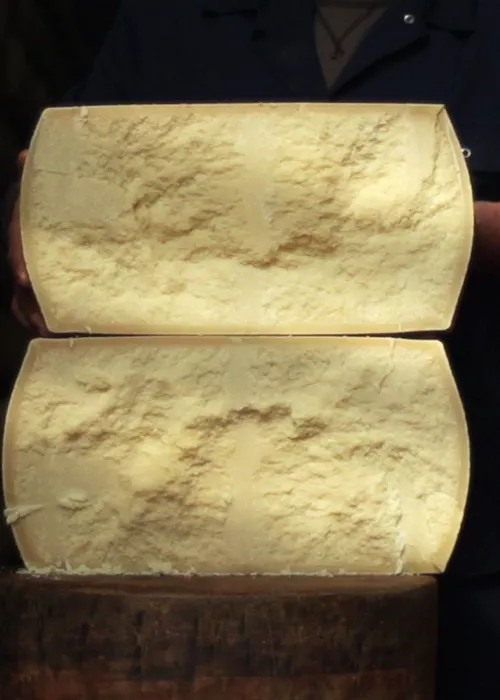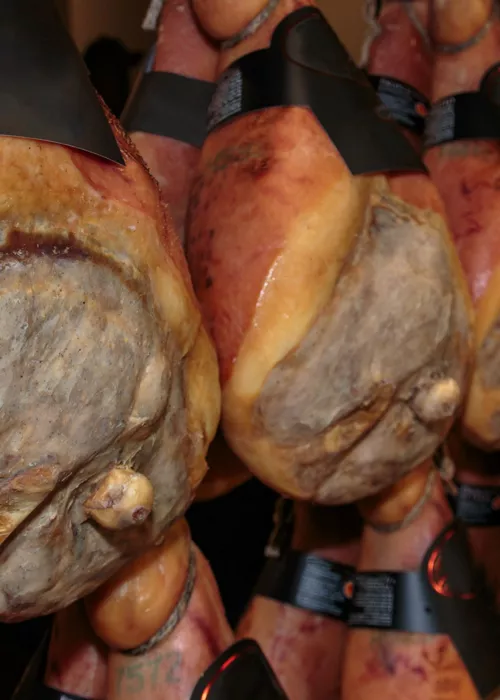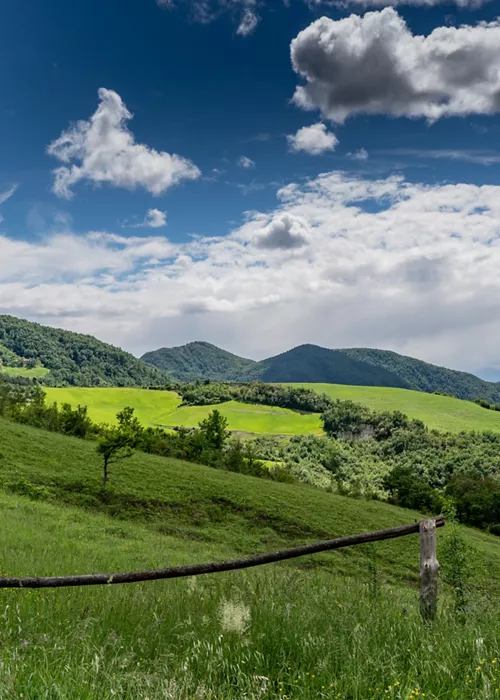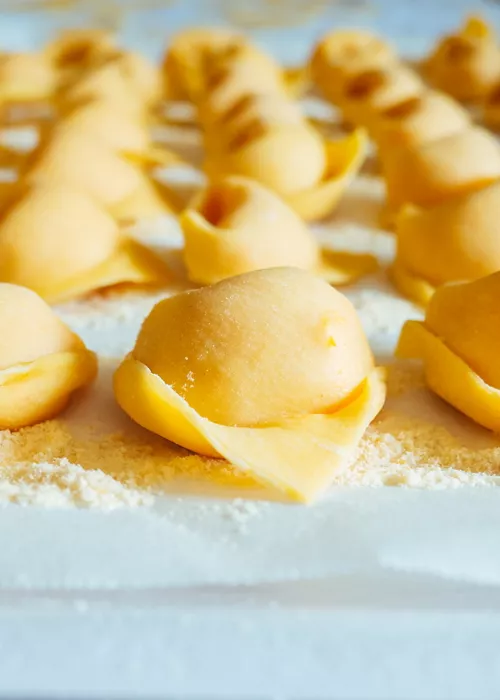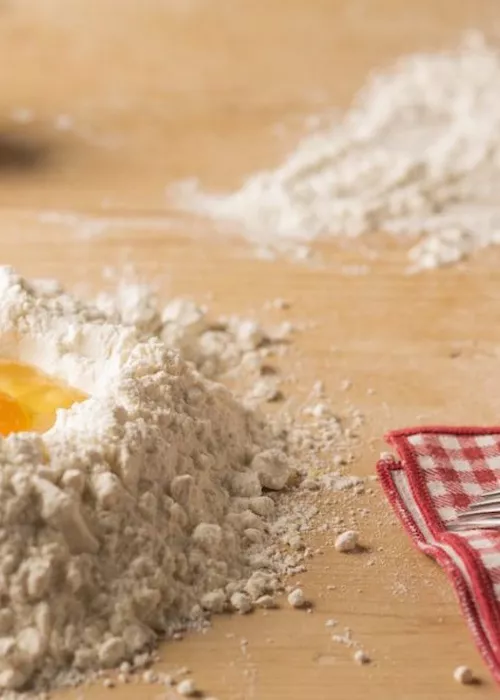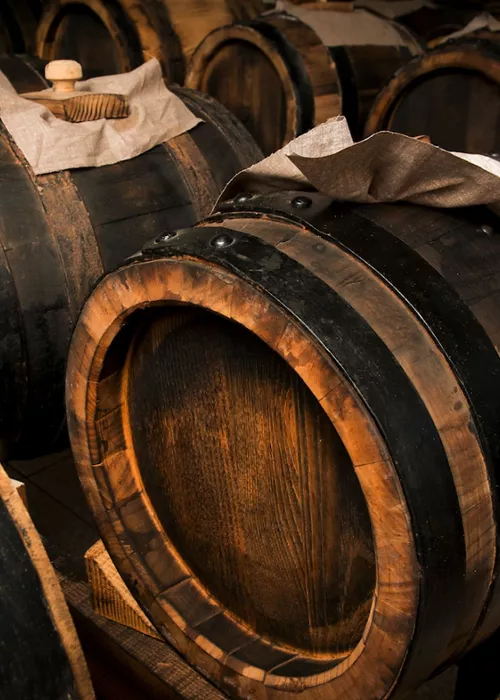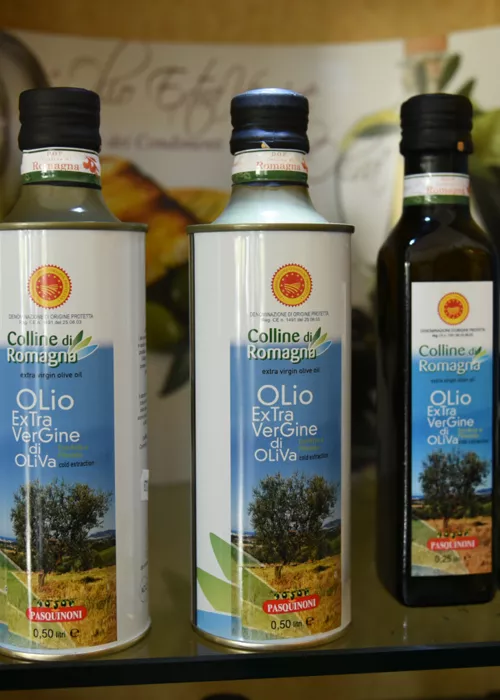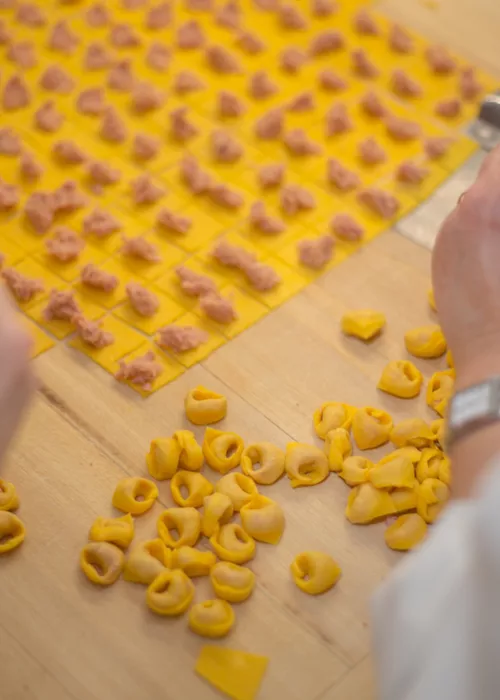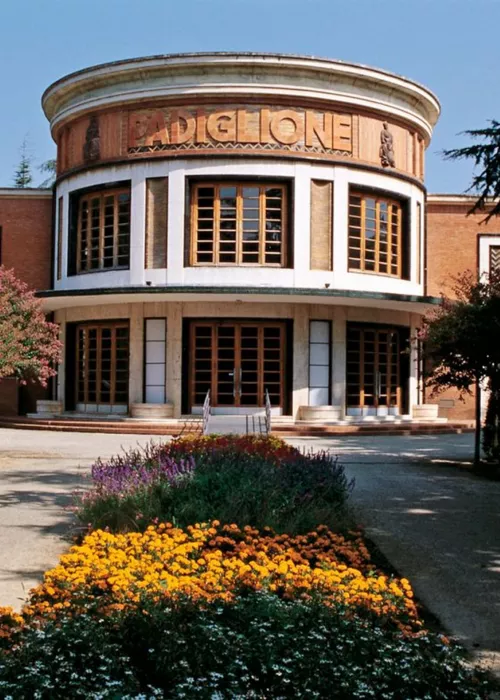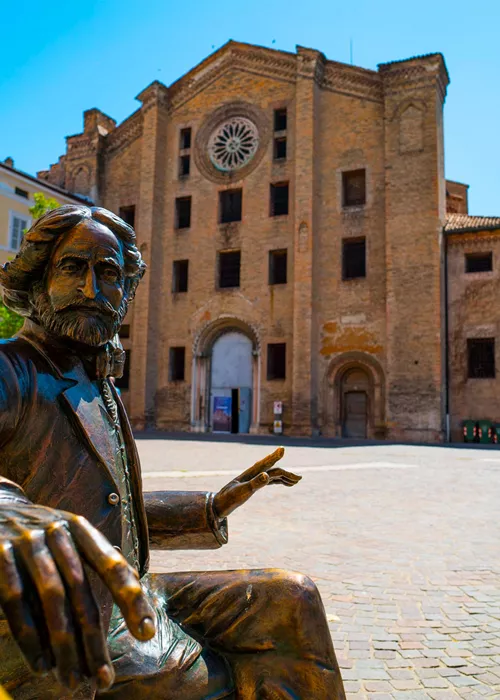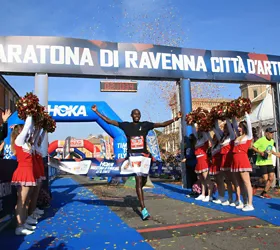The Emilia Romagna region by way of Edu Guedes’ pizza
3 minutes
The history of Parma Ham and other culinary wonders of Emilia Romagna
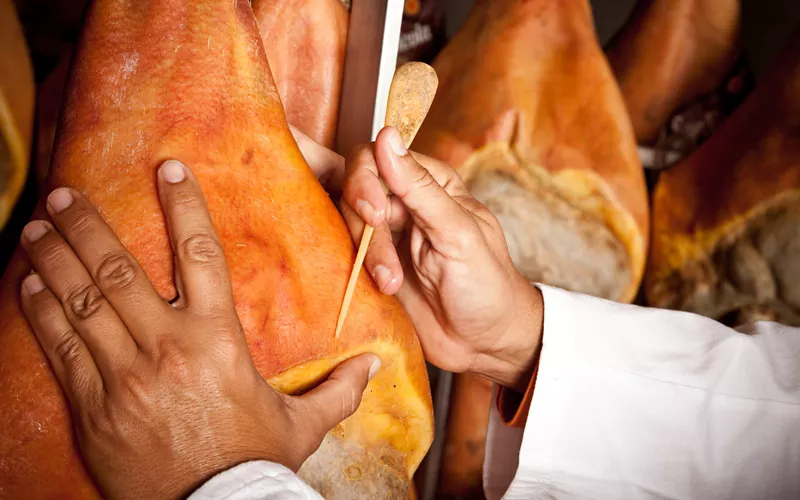
Nothing goes to waste with pork, says the famous adage, let alone when the masters of pork butchery in Parma have transformed it into Prosciutto di Parma PDO.
This sublime product has its roots in the 14th century, when the use of salt to preserve pork became widespread in Parma. Prosciutto in fact derives from the Latin prae exuctus or perexsuctum, meaning dried out, a reference to its processing that requires salt to dry the meat.
Even today, producers use only a few natural ingredients, without any chemical treatments, preservatives or additives: just pork, salt and a curing process that must last at least 12 months. The process is long and painstaking, and ends with the final application of the firebrand mark in the shape of a ducal crown, which identifies the real PDO Parma Ham.
The choice of the pig is fundamental: it must be strictly born and bred in Italy, weigh no less than 145 kg and be at least 9 months old. Then comes into play the art of the master salters and finally the process of slow natural curing in the dry, fragrant air that blows from the Parma hills, which creates the unmistakable sweetness of this cured meat. Its delicate and unmistakable flavour has made it famous throughout the world.
The product is made in a very specific area, which includes the territory of the province of Parma from five kilometres south of the Via Emilia to an altitude of 900 metres, between two rivers, the Stirone and the Enza.
This is a cured meat whose high quality has been monitored since 1963 by the Consorzio del Prosciutto di Parma (Parma Ham Consortium), and which since 1996 has been awarded the Protected Designation of Origin (PDO) mark.
Every year in September, Parma celebrates the king of cured meats with the Prosciutto Festival, a perfect opportunity also to visit the prosciuttifici (ham factories), which during this time open their doors to visitors with the Finestre Aperte (Open Windows) event. Visitors may also wish to explore the Prosciutto di Parma Museum in Langhirano.
Beyond Parma Ham
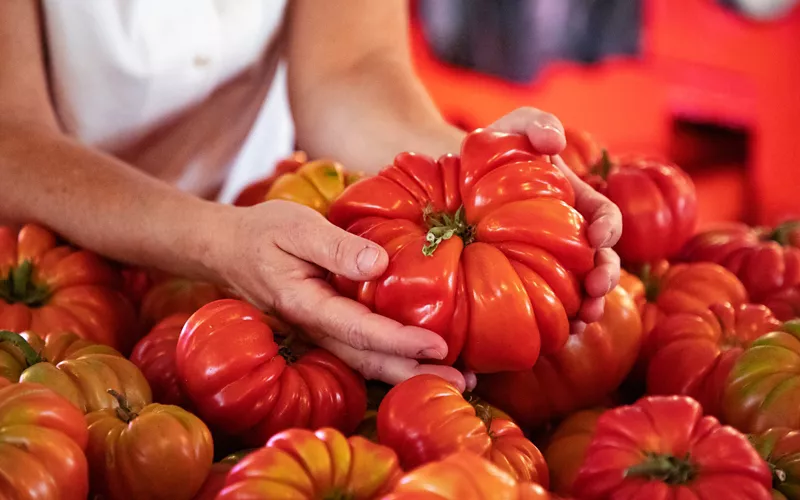
Any occasion is perfect to enjoy it, even simply tucked inside a loaf of fresh bread or included in more elaborate dishes. Such as, for example, the rosa di Parma, a traditional main course consisting of a veal roast rolled on itself, flavoured with slices of Prosciutto di Parma and another local delicacy: Parmigiano-Reggiano PDO. This cheese is the result of the evolution of nine centuries of production and is another of the institutions of Emilia Romagna, an area that with its cured meats, fresh pasta and products of the land stands out in the gastronomic culture of Italy.
These include the Riccio di Parma tomato (Parma curly tomato), a medium-large tomato that can weigh up to 400 grams. Unlike other tomatoes, the Riccio di Parma is characterised by the presence of furrows and its green shoulder, characteristics considered defects by the canning industry that contributed to its abandonment in the past. These tomatoes, however, have excellent organoleptic characteristics and good sugar content. On the palate we can perceive a slight acidic note contrasted by the marked sweetness characteristic of the variety.
It is no coincidence that Emilia Romagna is home to so many prestigious gastronomic products. This is in fact the Italian Food Valley, the great food district that includes a rich basket of PDO and PGI excellences and that can boast unique products such as traditional balsamic vinegar from Modena, mortadella from Bologna, Squacquerone di Romagna, formaggio di fossa cheese and many other delicacies. Not forgetting, of course, the legendary tortellino Bolognese, to be eaten with capon broth and made by hand, with expert movements resulting from a tradition handed down through families for generations. Or the piadina romagnola, already mentioned by Virgil in the Aeneid, which with only four ingredients - wheat flour, water, salt and lard - is a legend of taste.
Photo credit: Emilia Romagna Region

